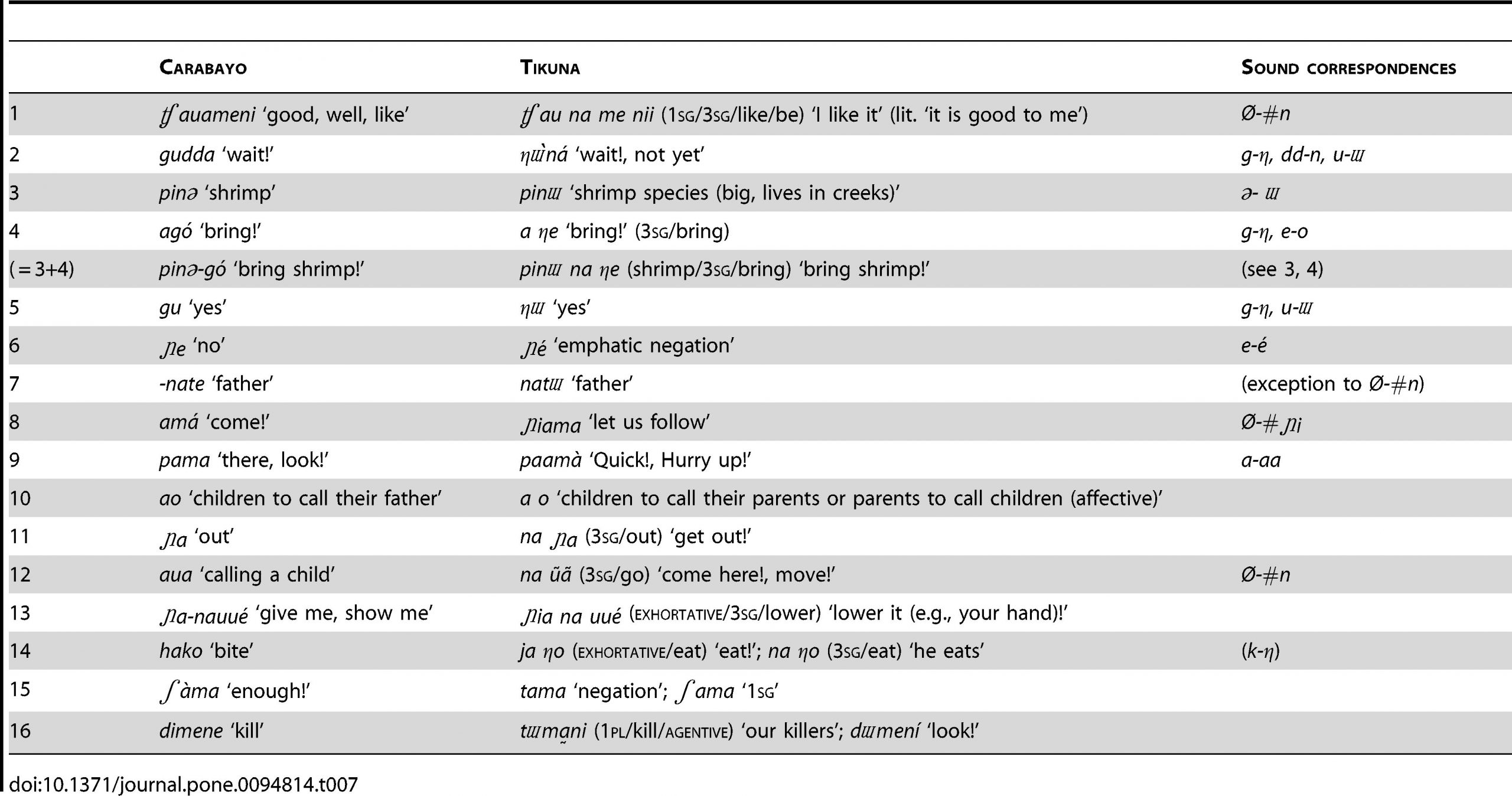Linking Isolated Languages: Linguistic Relationships of the Carabayo
Like PLOS ONE, the English language is rapidly taking over the world (we kid). In 2010, English clocked in at over 360 million native speakers, and it is the third-most-commonly used native language, right behind Mandarin Chinese and Spanish. While these languages spread, however, other indigenous languages decline at an accelerated pace. A fraction of these enigmatic languages belong to uncontacted indigenous groups of the Amazonian rainforest, groups of people in South America who have little to no interaction with societies beyond their own. Many of these groups choose to remain uncontacted by the rest of the world. Because of their isolation, not much is known about these languages beyond their existence.
The researchers of a recent PLOS ONE paper investigated one such language, that of the Carabayo people who live in the Colombian Amazon rainforest. Working with the relatively scarce historical data that exists for the Carabayo language—only 50 words have been recorded over time—the authors identified similarities between Carabayo and Yurí and Tikuna, two known languages of South America that constitute the current language family, Ticuna-Yurí. Based on the correspondences, the authors posit a possible genealogical connection between these languages.
Few resources were available to the authors in this endeavor. They analyzed historical wordlists collected during the last encounter with the Carabayo people in 1969—the only linguistic data available from this group— against wordlists for the Yurí language. In addition, they sought the expertise of a native speaker of Tikuna, a linguist trained in Tikuna’s many dialects. Using these resources, the authors broke down the Carabayo words into their foundational forms, starting with consonants and vowels. They then compared them to similarly deconstructed words in Yurí and Tikuna.
The examination involved the evaluation of similarities in the basic building blocks of these words: the number of times a specific sound (or phoneme) appeared; the composition and patterns of the smallest grammatical units of a word (a morpheme); and the meanings attached to these words. When patterns appeared between Carabayo and either Yurí or Tikuna, the authors considered whether or not the languages’ similarities constituted stronger correspondences. They also paid attention to the ways in which these words would have been used by the Carabayo when the lists were originally made many years ago.
The Yurí language was first recorded in the 19th century, but it is thought to have become extinct since then. From these lists, five words stood out: in Carabayo, ao ‘father’, hono ‘boy’, hako ‘well!’, and a complex form containing both the Yurí word from warm, noré, and the Yurí word, t∫au, which corresponds in English to ‘I’ or ‘my’. Given the evidence, the authors contend that the strongest link between Carabayo and Yurí is found in the correspondence of t∫au. The study of other languages has indicated that first person pronouns are particularly resistant to “borrowing”, or the absorption of one language’s vocabulary into another. Therefore, the authors surmise it is unlikely in this instance that either of the languages absorbed t∫au from the other, but that they share a genealogical link.
Similarly, the comparison of Carabayo words to words of the living language of Tikuna provided a high number of matches, including in Carabayo gudda ‘wait’ and gu ‘yes’. The matches especially exhibit sound correspondences of Carabayo g (or k) and the loss of the letter n in certain circumstances. Table 7 from the article shows the full results (click to enlarge):

Although it is possible that the Carabayo language represents a language that had not yet been documented until the time of 1969, the results of the researchers’ evaluation have led them to conclude that Carabayo more likely belongs to the language family of Ticuna-Yurí. The relationship of Carabayo to Yurí and Tikuna changes the structure of the Ticuna-Yurí family by placing Carabayo on the map as a member of that family. The Tikuna language, once considered to be the sole surviving member of the Ticuna-Yurí family, might now have a sibling, and the identity of a barely known language has become that much more defined.
For the authors, this research is a complicated endeavor. The desire to advance our knowledge and understanding of these precious languages must be balanced with the desires of the uncontacted indigenous groups, some of whom voluntarily choose to remain in isolation. As the authors themselves express, the continued study of these uncontacted languages seeks to engender an awareness in the larger community of the people who speak these languages, and to reiterate their right to be left to live their lives as they wish—in isolation.
Citation: Seifart F, Echeverri JA (2014) Evidence for the Identification of Carabayo, the Language of an Uncontacted People of the Colombian Amazon, as Belonging to the Tikuna-Yurí Linguistic Family. PLoS ONE 9(4): e94814. doi:10.1371/journal.pone.0094814
Image 1: Sunset on the Amazon by Pedro Szekely
Image 2: pone.0094814

